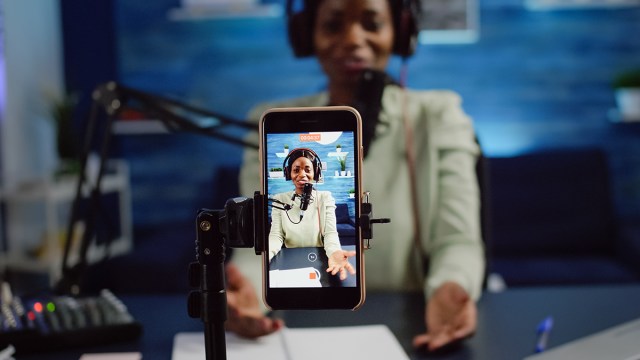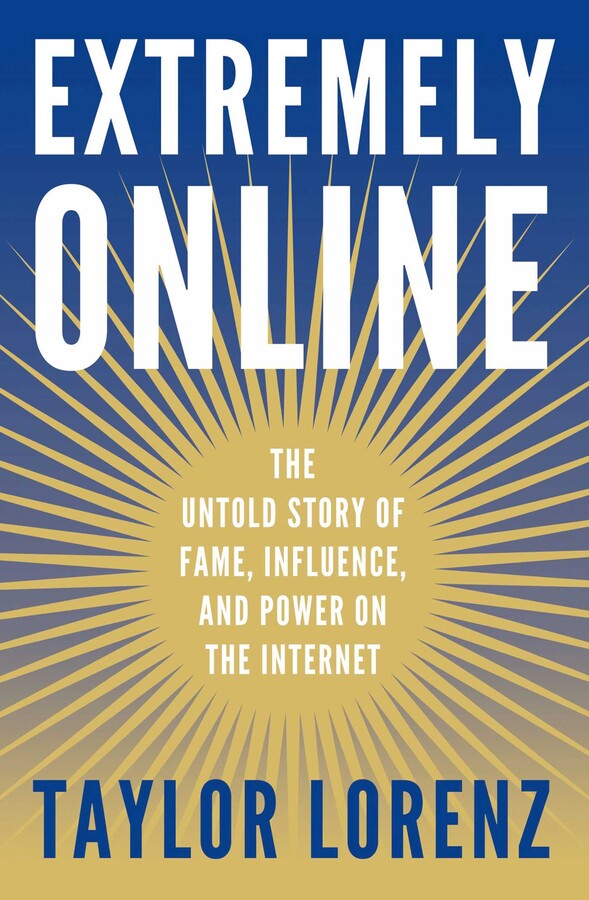
TL;DR
- In “Extremely Online,” Taylor Lorenz chronicles the rise of the creator economy, while trying to put female founders, creators, and trailblazers in their rightful historical context.
- Lorenz argues that platforms and creators have always been at odds. But the creator economy’s size means that influencers (users) have the ability to put their thumb on the scale and push companies in the direction they want — or ignore creators at the peril of their bottom line.
- Social media companies and creators aren’t the only beneficiaries of the creator economy’s profits. Many equipment manufacturers have sought to capitalize on the trend by creating and/or marketing products for influencers (and wannabes).
Learn more about the creator economy in our dedicated site section.
Social media (and the ensuing creator economy) “demolished traditional barriers and empowered millions who were previously marginalized,” Taylor Lorenz writes in “Extremely Online.” She goes so far as to argue “[i]t is often dismissed by traditionalists as a vacant fad when it in fact it is the greatest and most disruptive change in modern capitalism.”
“Extremely Online” is Washington Post columnist Lorenz’s creator-centric chronicle of social media and the birth of the creator economy. An important subplot of the book: She seeks to correct the male-driven narrative of the internet and put women founders, creators, and trailblazers in their rightful historical context.
Put another way, “Lorenz casts a sympathetic eye on the people using these platforms to create culture and build their livelihoods, highlighting cases where platforms’ indifference or outright incompetence threatens to derail the nascent creator economy,” Zoe Schiffer writes for The Verge.
Vox’s Rebecca Jennings notes that one of the most interesting aspects of her book is Lorenz’s documentation of “the ways that each platform’s power users shaped them for the better and for the worse.”

Lorenz tells Jennings, “I hope people can reexamine this recent history of the internet and look at women, who pioneered all this amazing stuff and never got credit and never saw the upside.”
Chris Stokel-Walker writes, Lorenz “convincingly weaves a narrative starting from mommy bloggers beginning to realise their worth in the early 2000s to the preened creator celebrities of today, who have better brand recognition among the younger generations than some Hollywood stars.”
Her bona fides? Well, Wired’s Steven Levy credits her with having “practically invented the influencer beat” (and he’s far from the only one to make that acknowledgement).
The Creator Economy’s Mommy Blogger Origins
Lorenz theorizes that bloggers were the first social media influencers. She tells Jennings, “My book opens with the Silicon Valley version of blog culture, which was a lot of tech and political blogs, and then what women did with it, which was to create the mommy blogger ecosystem by building personal brands, commodifying themselves, and becoming the first influencers.”
She argues that “Silicon Valley has been incredibly hostile to these power users. [Tech founders] almost resented the power they had on the internet. Once the pandemic hit, they all started talking about the ‘creator economy’ like it was some new thing. They’d maligned it for decades, because it primarily was pioneered by women.”
READ MORE: How the fight between tech founders and influencers shaped the internet (Vox)
“There’s so many incredible women on the internet that really pushed things forward and were so forward thinking and ahead of their time and I just wonder what would have happened if they got the millions of dollars in venture funding,” she tells Fast Company’s Jessica Bursztynsky.
After all, she says, “The creator economy was built by women. If you look at the market sectors that were first to adopt this new, now half a trillion dollar industry, it was fashion and beauty and mommy bloggers—people that were shut out of traditional media and traditional tech, and they were using these tools in ways often that the founders didn’t even anticipate or like or want or respect.”
READ MORE: Taylor Lorenz talks early influencers and misogyny in the tech world (Fast Company)
In addition to plain, old misogyny, Lorenz sees an inherent conflict between the aims of platforms and creators that continues to this day.
“It’s fraught, and it’s always been fraught. Content creators are always in tension with the platforms, because their goals are not aligned. A creator’s goal is to maximize engagement. The platform’s goal is to monetize. But once that starts happening, the creator wants to keep some of the monetization for themselves,” Lorenz explains to The Verge.
Professionalization of the Creator Economy
For a long time, Lorenz tells Fast Company, “There was this really vicious narrative in the mainstream media that basically people creating stuff on the internet, it was not real work.” However, she says, “I’ve always felt very strongly that that is wrong and deluded.”
Plus, “Content creators have more power by the minute,” Lorenz observes to The Verge. “Initially, brands had the upper hand, because we didn’t have a robust e-commerce situation. But now there’s infrastructure, and content creators can spin up a product and create their own brand. By the mid-2010’s, you see brands and influencers working very closely together. But influencers figured out, ‘Why would I advertise someone else’s products when I could just launch my own?’”
Today, “The creator economy, as it’s known, is now a global industry valued at $250 billion, with tens of millions of workers, hundreds of millions of customers and its own trade association and work-credentialing programs,” Lorenz writes for The Washington Post. And that figure, she reports, is expected to balloon to “$480 billion by 2027.”
Yet, she notes, “Many creators still run as single-person shops, handling all of the video shoots, editing sessions and sponsorship deals on their own. But other creators have worked to pump up their revenue by running large operations with specialized divisions of labor, which some in the industry call ‘content machines.’”
In fact, she reports, “Professional creators now often recruit and hire teams of specialists: managers, writers, editors, designers and camera operators to pump out content; agents, accountants, event coordinators and publicists to lock down appearances and revenue.”
READ MORE: Millions work as content creators. In official records, they barely exist (Washington Post)
Platforms Get It (Or Don’t)
The creator economy has been a boon to some platforms – and a pain for legacy services that haven’t quite figured out how to leverage it.
“TikTok put creators first in a way the other platforms hadn’t. Other platforms were wary of creators, because tech platforms want to dictate what their platforms are. And they don’t always like when creators use them in their own ways,” Lorenz tells The Verge.
“Twitter had a leg up on Instagram initially, because it was very much a hub for culture. But creators want to monetize, and time and time again Twitter failed to roll out monetization features,” Lorenz says.
Even in its iteration as X, Lorenz says, they fail to envision “a coherent monetization plan for people” with the Twitter Blue rollout as its latest misfire. “Elon Musk is speedrunning every mistake these other founders made for the last 20 years,” she says.
And there’s Facebook, which Lorenz says “fumbled the bag. They had every single big content creator before YouTube, and they refused to roll out monetization features in a meaningful way.”
And they continued to drop the ball with their acquisitions, she thinks.
READ MORE: Taylor Lorenz on her extremely online history of the internet (The Verge)
“Facebook was a bridge platform, basically, which is why I think it’s not relevant anymore, because it didn’t lean hard enough into creators until it was too late,” Lorenz explains to Vox’s Jennings. “Facebook is sort of the epitome of the sanitized, corporate Silicon Valley version of social media. But the Facebook News Feed played such a pivotal role in influencer culture, because it taught everyone to post for an audience.”
Unfortunately, “Facebook Video had all those people, and they squandered it. They had the biggest of all the biggest YouTubers and they couldn’t get the monetization right. They didn’t care about creator monetization, but YouTube had built that out, and they were just in such a better position to absorb that talent.”
YouTube, she says, “saw very early on if they allowed people to make money, that would keep talent there. YouTube was also adjacent enough to the entertainment world where there were standards around paying for content and ad deals. YouTube started as an online video platform, and there were ad models in place for online video, like pre-roll or mid-roll. With Facebook, which was more text-based social media, there wasn’t a norm, there weren’t revenue models, and there weren’t monetization pathways already established.”
And then there’s MySpace, which Lorenz thinks “was just way too early. For most people, it was not normal to go on the internet and post about yourself. And there wasn’t this follower-based model of social media yet,” she tells Jennings.
Downstream Effects
Lorenz says that the creator economy has created “boom times” for some manufacturers, especially those “selling professional grade cameras, microphones, tripods, lights, green screens and other gear,” she writes for The Post.
She cites Shure as one of the winners, to the extent that the audio electronics firm “started organizing its studio gear into what it called a ‘content-creator portfolio’ after seeing a surge of business in recent years from podcasters, streamers and others.” The pandemic spurred a jump in sales, with the content-creator portfolio sales doubling.
Shure Associate VP Eduardo Valdes tells Lorenz, “We want them to feel confident in the technology, like it’s a source of pride — that they are serious, that they’re buying a tool and not a toy.”


